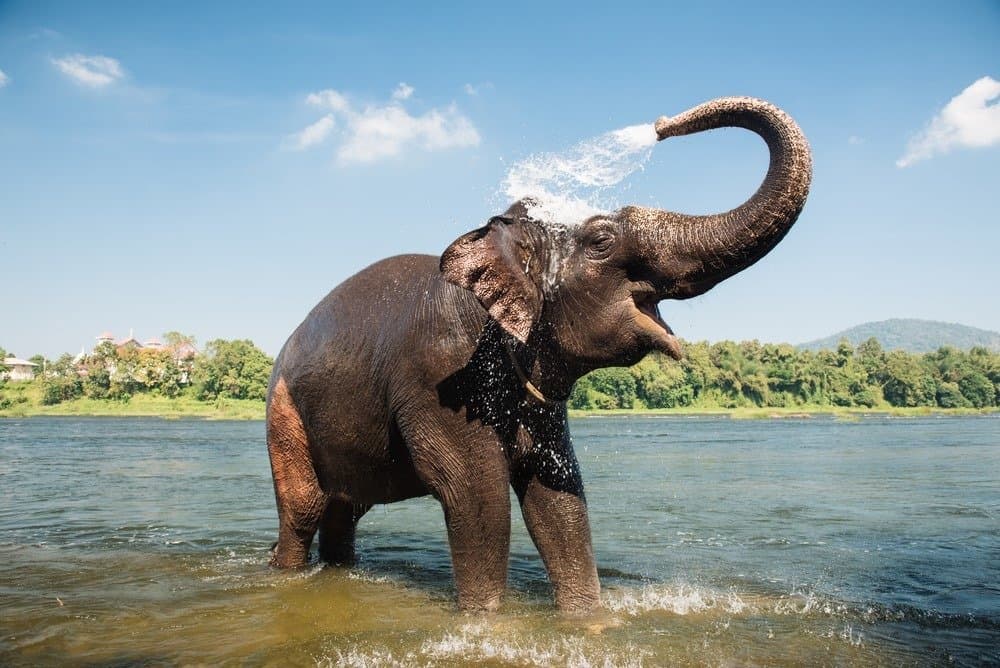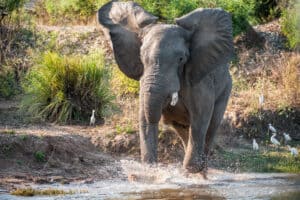Household pets are one of the best things that we can add as additions to our families. They can bring so much joy, happiness, and a sense of peace to have them. Some of the best household pets throughout the years have been dogs, cats, birds, lizards, hamsters, and many more! But what about an elephant? Well, let’s see just how good of a pet they can be!
Watch the Incredible Video Posted Below!
Elephant Sighting in India

Asian
elephants
can run up to 27 miles per hour.
©Dmytro Gilitukha/Shutterstock.com
The above YouTube video takes us to Munnar, India. Munnar is a small town that is 72.2 square miles. This video was uploaded by the YouTube channel Baiju Attukal. This channel gathered more than 58,000 subscribers. And to date, this specific video has garnered more than 14 million views! This elephant, Lekshmi, is a frequent visitor to this house and family. They share their thoughts on the description of the events below.
“Lekshmi 12 year 12-year-old female elephant and her friend 25 years 25-year-old male elephant Kannan have been frequent visitors to my family for the last two years. Me and my family members and my dog Ceser 6 years old, eagerly wait for their visits. My wife and my mother keep food for Kannan and Lekshmi. Without that, they never pass my gate. This video is about such a visit to my house.”
A Visitor is Here
The video above starts with a massive elephant walking down the road. For all the houses along the road, this elephant knows exactly where she is headed. As she gets closer to the house on the right side of the video, we see a man emerge and begin to open the gate. The elephant walks right up and goes through the gate.
This elephant, Lekshmi, is a frequent visitor at this house and is making her rounds. She doesn’t stop by, just entering through the gate. We see her walk right up to the front door, and the family opens the door. She sticks her head in, and the family begins to feed her some fruit, which she gladly takes.
How Many Elephants Are in India?
There are three different species of elephants: the African savanna (or bush), the African forest elephant, and the Asian elephant. Out of these species, it is estimated that there are 500,000 in population left. Elephants can be found in Africa and Asia.
According to the World Wildlife Organization, the population of the Indian elephant in Asia is estimated to be between 20,000-25,000.
Is it Normal for Elephants to Make Friends With Humans?

Elephants are extremely intelligent animals that have learned not to interact with people.
©Nuttaya Maneekhot/Shutterstock.com
The video above is certainly enchanting to everyone who watches it. Elephants are such captivating creatures – known for their intelligence and empathy – that people would love to experience an encounter like the people in the video do daily. Elephants in India have been captured and domesticated by humans for hundreds of years – mostly to be trained to do heavy lifting work. If their trainers are kind – they no doubt formed bonds with them when no other elephants were available. Does this mean that it is normal for elephants to befriend humans? Absolutely not.
The people of farming communities in India are grappling with how to share their lives with elephants now that they have migrated out of the northern forests after mining and other developments have driven them out. (India lost 1.6 million acres of forest between 2015 and 2020.) The elephants are not making friends.
Humans and elephants are not getting along. Elephants kill around 400 people a year in India – while people kill around 150 elephants. Many of these elephants are killed by electric fences or by being hit by trains. There is now a large effort consisting of research and fieldwork to help humans and elephants coexist. Elephants have destroyed crops and buildings without a moment’s notice – but this research aims to change that by learning to interpret the animal’s patterns and needs – and to learn better ways to keep them off of farms and away from villages.
The photo featured at the top of this post is © iStock.com/goodze
Thank you for reading! Have some feedback for us? Contact the AZ Animals editorial team.






